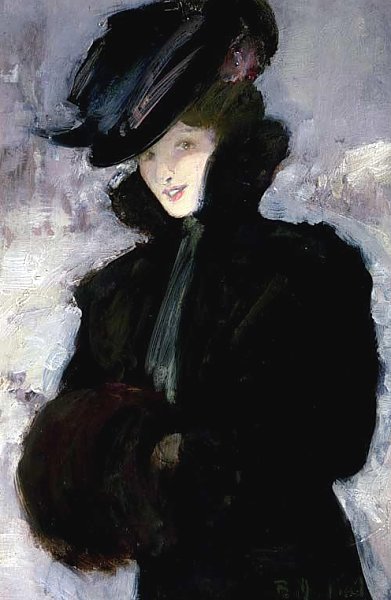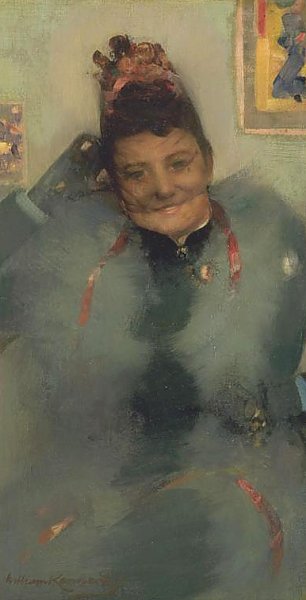|
Back
in port, the seal skins were graded on the basis of the seal's age
and the quality of the pelt. The finest skins from young seals were
cured and dyed as furs to be made into muffs, boas and capes which
were so fashionable at the end of the 19th century. The most sought
after were the woolly, white furs of pups less than a fortnight
old.
 ©SCRAN/Bridgeman
Art Library
©SCRAN/Bridgeman
Art Library
Fur Coat by Bessie MacNicol [1869-1904] |
 ©SCRAN/Glasgow
Museums
©SCRAN/Glasgow
Museums
The Fur Boa by William Kennedy 1890-3 |
The
Fur Coatís sober colour palette and impressionistic brushwork are
characteristic of the Glasgow School artists and their circle. Bessie
MacNicolís image possesses a furtive prettiness, and the viewer
meets the gaze of this flirtatious young woman whose face is partly
concealed by her bonnet. She appears to greet us with alacrity and
pleasure. Her fur coat, the paintingís nominal subject, engulfs
this lady and protects her from the cold. Her glamour is contrived
to outwit the elements - her hat and muff are made of fur and her
lips are painted scarlet. Sadly, MacNicol's flourishing artistic
career was cut short as she died in childbirth at the tender age
of 34.
The
other elegant young lady has come to the artist's studio to have
her portrait painted. She is obviously enjoying the experience because
she is smiling and her pose is quite relaxed. She has dressed up
for the occasion wearing the latest fashion accessory, a fur boa.
The artist has reinforced the relaxed atmophere of the picture by
using only a few colours - mainly blues with a few touches of red
in her hat and its ribbon which trails round her boa. These colours
are echoed in the background details of the picture. This type of
tonal painting , where a few colours are used to create an overall
harmony and sense of balance, was first introduced into Scotland
by the American artist, James McNeill Whistler. His art influenced
many of the Glasgow Boys including Kennedy.
|